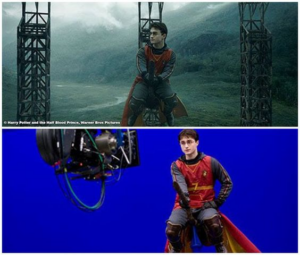3D animation is the graphical technique of creating a moving illumination of computer-generated objects through three-dimensional space. Usually, 3D animation software is employed to develop 3D-style images. Further, visual effects and precise timings are adopted to add movement.

What is 3D animation?
3D animation is currently the most popular form of animation in use. However, it is quite different from 2D animation. Unlike 3D animations, 2D animators create flat hand-drawn images with subtle changes that appear to move when viewed in a sequence. This style was popular as its technology was easily accessible, and it granted freedom for artists to create rigs for characters without redrawing. Despite the advantages of 2D animation, 3D animation was soon widely adopted because it was less time-consuming. Additionally, the knowledge of 3D modeling is enough to elevate your skills as a 3D animator.
What Are the Benefits of 3D Animation?
3D animations have certain distinct traits that make them the most suitable for various industries. Here is a list of their beneficial characteristics:
Keep Your Audience Engaged
3D animations mimic reality and create compelling images that help people visualize the non-existing. For example, 3D animated graphics of an under-construction apartment enables people to see their future living spaces, simplifying their decision-making process. Further, it entangles the user and keeps their undivided attention, promoting better user engagement.
DeepMotion: MetaHuman Tutorial | How to Animate With Animate 3D
Draw the Attention
3D animations appeal to the viewers easily and are capable of capturing mass attention. Therefore, they can be projected onto a giant screen in a well-crowded area. This way, they will attract the attention of the masses with their stunning imagery. For example, a digital billboard with 3D animation can gravitate people even in a well-crowded location.
MOST INCREDIBLE 3D ADVERTISING BILLBOARDS
Effective Communication
3D stands for three dimensions, meaning an image’s length, breadth, and height are projected, which is absent in any other animation. Hence, this conveys a sense of depth to the viewer. So the viewer can visualize the image quite close to reality. Therefore, 3D animations are effective communication tools that help users visualize close to authentic images. For example, through 3D animation, you can offer your viewer a 360-degree look at a product before its construction is even completed.
Excellent Branding Tool
Companies that adopt 3D animation during their launch are often perceived as being at par with industry standards. This is because, through 3D animations, they project the intricate details of a product. They’re detailing showcases their ability to think forward and their nature to get accustomed to the current needs. Therefore, 3D animations are seen as the best branding tool.
Television and Movies
3D animation opens up a new category for kids in the entertainment industry. Since 3D animation brings the characters to life through character animation, it enhances the emotional connection with the viewers.
Why Lighting Animated Movies Is So Complicated | Movies Insider
Gaming
3D animation in gaming gives the player an immersive experience. As it imitates real life, the play’s action intensifies, creating an emotional experience for the player.
Company presentations
Regarding presentations, 3D animation draws the viewer’s attention with its captivating visuals and holds their attention until it gets completed.
Marketing
Marketing is all about delivering the right content to the right customer. Hence, 3D animation enhances the content quality and successfully kindles their interest in your products.
Architecture and Design
3D animation offers a way to visualize an architect’s design in combination with VR and AR tools. This way, they get meaningful insights into their work.
Different Jobs in the 3d Art/Design Industry
Prototyping
The process of creating a model of a product to visualize and improve its design is called prototyping. For this purpose, 3D animation is combined with 3d printing to create prototypes.
Medicine
3D animation simplifies the entire process of medical teaching with an in-depth explanation. You can also use it to communicate a medical procedure to patients.
Simulations
Employee training is a costly affair for several manufacturing companies that require personnel with hands-on knowledge. Using 3D animation, employees can undergo training close to a real-life setting, which saves cost and time.
With 3D animation extending its benefits to various industries, you might wonder how it is created. Here is a sneak peek into the process of 3D animation.
Process of 3D Animation
Creation of Storyboards
Once an idea is conceived, it is first conceptualized on a storyboard. A storyboard is a tool that conveys ideas in visual form.
Modeling
At this stage, animators create 3D objects or characters called primitives. Then, they either use a modeling tool or scan real objects into a computer. While using a model renders more autonomy to the animator, scanning objects from reality saves time. Following the primitive stage, a 3D mesh is made to reshape it to the desired figure.
The History of 3D Modeling and Animation
Texturing
Once the 3D models are created, you have to overlay 2D images over them to give colors, designs, and textures. This way, the model is given a personality. This process of adding textures, colors, and techniques is called mapping. These maps are created with the help of tools like photoshop.
Rigging and Skinning
Following this, the animator creates a system of controllable bones to enable the movement of a character during animation, called rigging. Every rig is unique for a character and corresponds to a set of controls. Then, the skinning process follows, which involves attaching the 3D model to the skeleton of bones.
Animation
Animation involves the process of creating movements for a 3D object. An animator can employ any type of animation. They include:
- Manipulating the object frame by frame.
- Placing objects on the splines and setting them to follow the path of the curve.
- Import motion captures data and apply it to a character rig.
- Using 3D application’s built-in physics engines.
Following this, lighting and camera angles are added to the object.
Rendering
Finally, the designed graphic images are created and exported during this stage. The 3D characters obtained are adjusted to suit the lighting, shadows, reflections, transparencies, and other details.
How to Become a 3D Animator?
If you wish to become a 3D animator, you must first gain knowledge and upgrade yourself further by researching the following:
- The motion of humans, bipedal creatures, quadruped creatures, and animals.
- Facial movement and portraying different moods.
- Mechanical design.
- Mechanical operations.
- Weight and physics.
This knowledge gives you a solid foundation to start your practice. If you are a beginner, start by downloading the best 3D animation modeling software available for free such as Tinkercad. It is an easy and powerful tool for creating 3D models with many learning resources. It is the most suitable for people even without experience in 3D modeling. While practicing modeling, you can also learn to animate, downloading free rigged models from the internet. Then, practice animating animals, characters, and moving props. You can use free animation software for beginners, such as Daz3D. You can refine your skill and reach versatility with consistent practice.
From a technical point of view, you need to understand how motion capture works. This is because you will have to tweak your work after importing the motion capture data.
Here are some of the skills to become a successful animator:
- Creativity.
- The Willingness to Work as a Team.
- Immaculate Attention to Detail.
- Absorbing Information Quickly.
- Having an Excellent Memory.
- Mastery of Organization.
- A Desire to Push Boundaries and Overcome Challenges

Tips to Break into the Industry
Research
Becoming a 3D animator involves a lot of research. It would help if you researched many ways to fine-tune your skills while projecting prolific imagery for your viewers. Hence, it is vital to understand the latest techniques and spend considerable time adopting them to create your images.

Create a portfolio
A perfect 3D animation portfolio can fetch the best job suitable for your niche. Focus your efforts on showcasing your ability to show diverse emotions through facial animation. This way, you can highlight your versatility. Further, it would help if you emulated weight and physics while working with your images.
Use Networking to your Advantage
Focus on building your contact with other animation artists. This way, you can gain mentors while creating your portfolio and gain meaningful insights into your work. To develop your contacts, attend various events and industry meetups featuring professional artists and software creators. You will also gain valuable knowledge by listening to their talks and speeches.
3D Animator Salary Range
3D animation is demanding because there is always a need for film, games, and VR. Hence, there is always a need for highly skilled animators. On average, a 3D animator earns $59,920 per year. However, their salary may range between $33,000 per year and $95,000 per year, depending on experience, location, and industry. A higher role in the same field can give you more than this.
Final Thoughts
3D animation is a good career choice, but it requires a good investment of hard work and creativity from your end. Once you master the basics and get a job, you must focus on improving yourself. This will refine your skills as an animator and enrich your experience. A good amount of knowledge and your innate creative vision, nurtured through your experience, will elevate your success.















